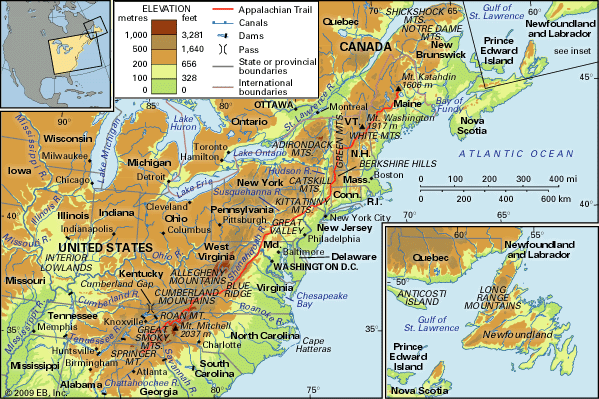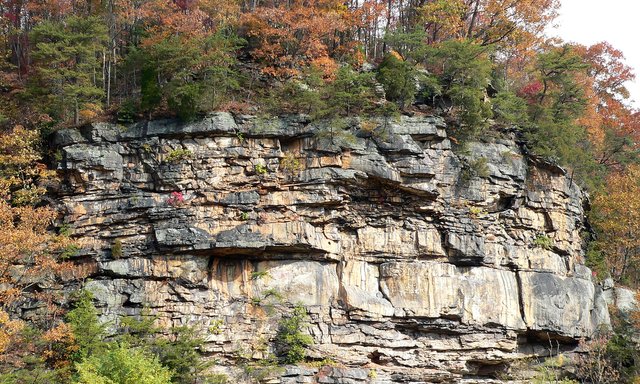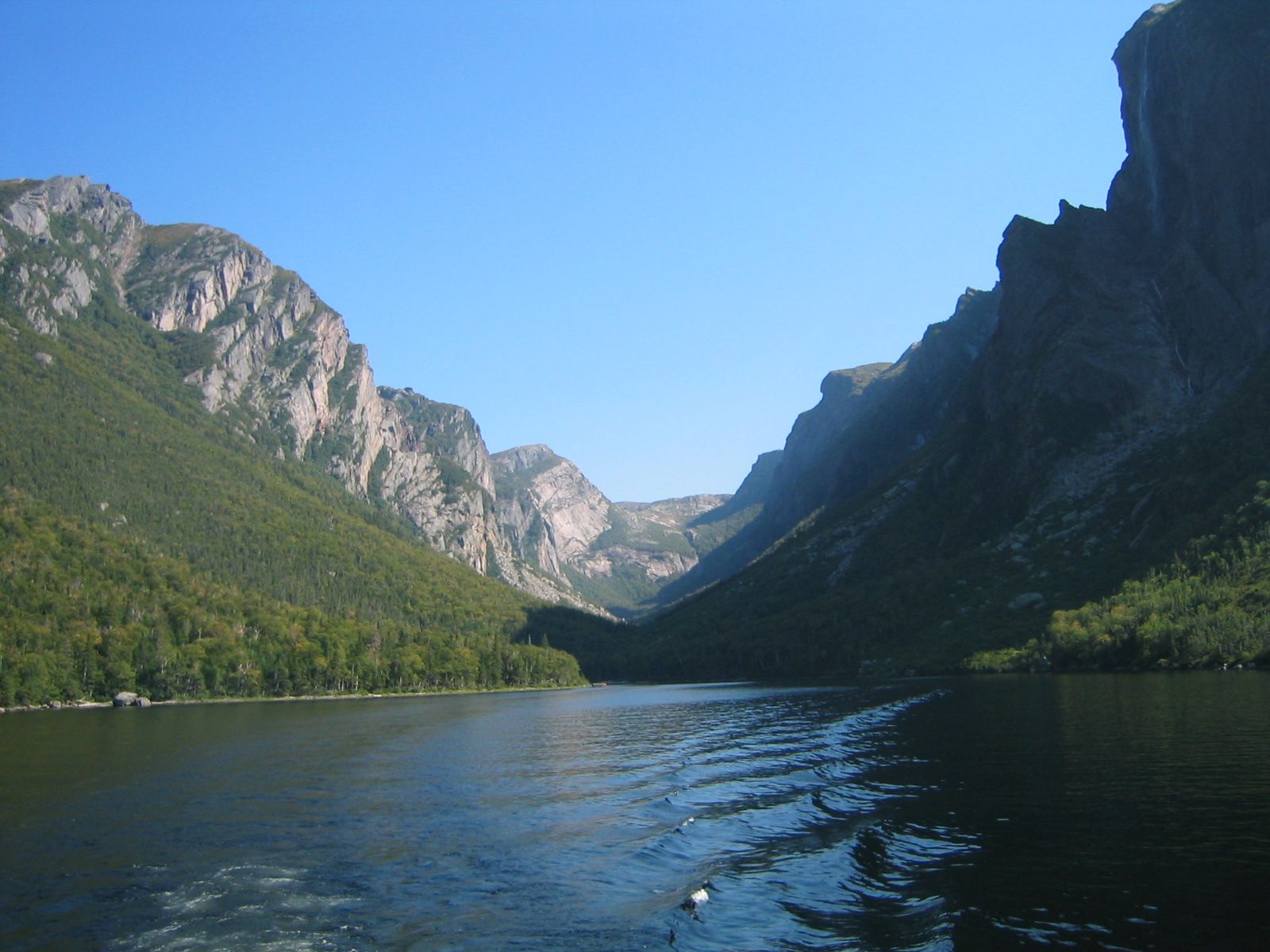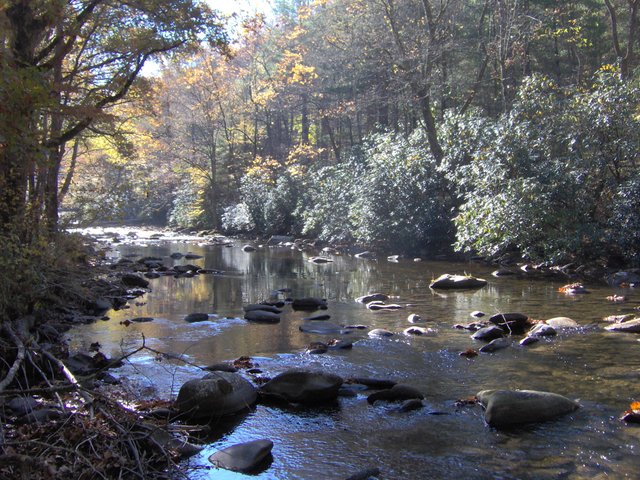The Geology of the Oldest Mountains in the World: Vol. 1 - Appalachian Mountains
Generally speaking, when people think of the mountains, they envision colossal snow capped titans that stand miles above the ocean. While those sort of mountains are very impressive, it’s the more modest mountains that are typically overlooked. In this post I’ll be discussing one of the worlds oldest mountain chains, that predates the dinosaurs and are a product of the supercontinent Pangaea itself. Today, we’ll be talking about the unpretentious, yet very dynamic Appalachian Mountains of eastern America.
Photo of the Great Smoky Mountains during the spring time. Image Source: Shot by author of this article.
Stretching from Alabama to the Canadian Island of Newfoundland (1500 mi or 2400 km), the Appalachian Mountains make up the Eastern Continental Divide of America, separating the eastern seaboard from the Midwest. Unlike it’s big brother to the west (the Rocky Mountains), the mountain peaks of the Appalachians are much rounder, its valleys much broader and its lush green forests teem with life. Furthermore, the average altitude throughout the Appalachian belt is much lower than its American counterparts, with the highest peak being Mt. Mitchell in North Carolina, standing at 6,683’.

Overall, the United States Geological Survey (USGS) defines the Appalachian Highlands physiographic division as consisting of twelve provinces:
• Atlantic Coast Uplands
• Eastern Newfoundland Atlantic
• Maritime Acadian Highlands
• Maritime Plain
• Notre Dame and Megantic Mountains
• Western Newfoundland Mountains
• Piedmont
• Blue Ridge
• Ridge-and-Valley
• Saint Lawrence Valley
• Appalachian Plateaus
• New England province
While they may not stand as high as the Rockies, they are much older. Dating back to roughly 480 Ma, the Appalachians distinct look can be attributed to several continental collisions and eons of weathering. Many scientists believe these mountains are in fact the oldest mountains in the world, though this is contested. However, what goes uncontested is that they are home to the second oldest river in the world and it’s ironically named, the New River, which is located in West Virginia. This rivers distorted path along the Appalachians, expose rocks that are well over 1 billion years old. To give you an idea of how geologically old these mountains are, the Himalayan Mountains (home to Mt. Everest), have been dated to be roughly 40 Ma. To say the least, the Appalachian Mountains have truly stood the test of time.
 Image of the New River Gorge in West Virginia, which is the second oldest river in the world. [Image Source]
Image of the New River Gorge in West Virginia, which is the second oldest river in the world. [Image Source]
What caused the Appalachian Mountains to form?
When taking a look at the exposed rocks in these mountains, there are elongated belts of folded and thrust faulted marine sedimentary rocks, volcanic rocks and slivers of ancient sea floor. These deformed rocks are evidence that plat collision did in fact occur. As of right now, geologist’s believe the first of several mountain-building plate collisions occurred 480 Ma (Paleozoic Era), during the construction of the supercontinent Pangaea. At one point, North America and Africa collided (known as the Alleghanian orogeny), which makes the Anti-Atlas Mountains of Morocco their long lost separated appendage. These mountains made up a greater group of mountains known as the Central Pangean Mountains, which extended into Scotland and were a product of the North America/Europe collision.
Over the course of 200 million years (Mesozoic Era), these mountains would be practically reduced to a flat plain by erosion and weathering. Then, roughly 66 million years ago (the current geological Cenozoic Era) this region was uplifted once again. This uplift caused streams to rapidly move downward cutting in ancient bedrock, some of which followed weak layers defined by ancient folds and faults. Other streams had such a rapid downcut, they would eventually cut across the folded rocks of the mountain core, creating canyons and other geological features. All of these processes are what created the present day topographical landscape.
 Image showing how the waters of the New River slowly cut through the bedrock of the Appalachian Mountains. [Image Source]
Image showing how the waters of the New River slowly cut through the bedrock of the Appalachian Mountains. [Image Source]
Today, the Appalachian Mountains are home to some of the most beautiful sceneries this world has to offer. I can attest to this considering I’ve explored much of the mountain chain myself. One of the more intriguing characteristics of these mountains are the diverse landscapes and climates that come along with it. For instance, the Blue Ridge Mountains of western North Carolina are considered to be a temperate rainforest, that rivals the lush green forests of Pacific Northwest. On the flipside, the Shenandoah Valley in Virginia receives significantly less rainfall due to a strong rain shadow, which occurs from a number of ridges to the west collecting most precipitation moving eastward. Heading further north to Mt. Washington in New Hampshire, some of the strongest winds and coldest temperatures in the world are recorded. All being said, the Appalachian belt is indeed a very dynamic region.
 Western Brook Pond in the Long Range Mountains of Newfoundland, Canada. [Image Source]
Western Brook Pond in the Long Range Mountains of Newfoundland, Canada. [Image Source]
As a child, I honestly didn’t respect these mountains too much. In hindsight, I was just being naive and was one of those people that were under the impression that mountains were supposed to be massive snowcapped boulders that jutted into the sky. However, after visiting these mountains periodically throughout my life, I can say without a doubt they are by far my favorite geological feature to date. While I could talk about these mountains forever (and I most likely will in future posts), I’ll leave you with a cool story that I shared with my family in Appalachia.
 This is Hazel Creek, which resides in the heart of the Smoky Mountains National Park. [Image Source]
This is Hazel Creek, which resides in the heart of the Smoky Mountains National Park. [Image Source]
In the Smoky Mountains National Park of western North Carolina there was a very isolated area in the forest called Hazel Creek. Words cannot describe how majestic of a place it truly was. It’s technically a huge water shed that acts as a tribute to the Little Tennessee River, whose waters flow all the way to the Ohio River, then to the Mississippi River and finally down into the Gulf of Mexico. One day our family took a family trip to Hazel Creek and as usual my father just sat on a large rock in the middle of the creek and ran his hand through the smooth gravel sized rocks. Out of no where my father seemed excited and called over the family and asked “Does this look like a shark’s tooth?” Seeing how most of us were born and raised on west coast of Florida, we knew immediately that it was in fact a shark’s tooth. The clear giveaway was the noticeable ridge on the tooth that formed where the sharks gum line would have been. Unlike most shark’s teeth, this one was worn down and very old.
Upon further investigation, my father spoke to a few locals and ran into a guy who actually collected shark’s teeth in the area as a hobby! It blew our minds because we were over 500 miles from the coast. To say the least, this was one of the stories that led me down the path of geology and natural sciences in general. With that being said, I hope this post inspires you to look further into the history of the Appalachian Mountains to discover the abundance of knowledge it has to offer.
If you enjoyed reading this post, be sure to give me a follow and check out the rest of my blog. Overall, my blog consists of scientific topics dealing with geology, meteorology, food and history. The goal of this blog isn’t to earn money per se. While that is a nice benefit, I’m more interested in networking, learning, informing and helping the Steemit community grow to new heights. Thanks for all your support!
Bibliography:
https://en.wikipedia.org/wiki/Appalachian_Mountains
https://en.wikipedia.org/wiki/Alleghanian_orogeny
https://en.wikipedia.org/wiki/Anti-Atlas
https://www.learner.org/series/modules/express/pages/scimod_34.html
https://www.nps.gov/neri/learn/nature/the-new-river-fact-or-fiction.htm
General knowledge gathered while living in the region.

https://steemit.com/geopolis/@geopolis/geopolis-the-community-for-global-sciences-update-2-higher-base-votes-new-logo
If you do not want us to upvote and comment on your posts concerning earth and earth sciences, please reply stop to this comment and we will no longer bother you with our love ❤️
The Appalachian's remind me a little of the Australian Great Dividing range, although the Great Divide is so low in parts it's hard to tell it is there at all!
Honestly, my knowledge of Australia from a geological perspective is somewhat limited, with the exception of a mountain chain or two. If I remember correctly, it's the Hamersley Range in Australia that also competes for the title of being the oldest mountain range in the world. With that being said, it looks like I'll be writing about the geological landscape of Australia fairly soon!
No pressure @Keephy! The Great Divide I suspect have very different mechanism at play in comparison with the Appalachian's even though the 2 are similiar in height. I know there are a lot of ancient extinct volcano's along the Divide, that have been eroded down to reveal the basalt cores which gives the range a distinctive appearance. There seems to be very little current activity in the Great Divide except down in the South, where supposedly there has been some recent orography and volcanism.
Apparently the Great Divide is a fairly complex geological terrain. There would appear to be a number of mountain ranges in the divide. From the pictures I've seen, they do look very similar to the Appalachians in parts.I've read about the Snowy Mountains a bit in the past. I noticed you write about astronomy! I'll have to give you a follow since I have a keen interest in astronomy. Are you excited about the Webb telescope?
Nice when the straight science is combined with personal anecdotes, brings the article to life. Good job!
I didn't know about the second uplifting. Can you expand on that in another post, maybe?
Absolutely! I plan on talking about the Appalachian's quite a bit since I'm currently in this region of the country. Thanks for the support. :) I followed back!
Yay! We actually just had an NC state geologist speaking at our Science Cafe last night. I'll try to get something about that posted this weekend.
Great geology lesson and the landscapes are idyllic and soothing. Well worth a visit :)
I'm glad you enjoyed it! I write about geology and other natural sciences regularly! Be sure to check out the rest of my blog! Thanks for your support! :)
I will! Natural sciences are indeed rather interesting and filled with new things to learn and be amazed by
It's amazing how far a little speculation will go and how helpful it can be in ones life. :)
The landscapes can't talk so you have to. Or can they?😉
Great post! This just makes me want to plan a trip to the Appalachians.
It's definitely worth the visit. This place has water all over that place, that practically seeps out of the mountainsides. The weather is magnificent to boot.
Very interesting article. I loved that part with the sharp teeth especially. This was like your personal geological discovery. What does this really mean? That the Appalachians somehow moved to the left off the ocean border or that they are still where they were and it was ocean that shallowed and made that big 500 miles distance to be new shore?
Well, the piedmont and coastal plains to the east of the Appalachians mainly formed from runoff over millions of years. You can actually find an abundance of sharks teeth in the smalls streams and creeks of those regions. One thing I find to be interesting about the Appalachians is the clear difference in the mountains characteristics, depending where in the chain you look. If you look at the mountains of Virginia and compare to them to those of North Carolina, you'll notice there is a huge difference in appearance. It's fairly obvious the mountains of western North Carolina are much younger than those of Virginia. Furthermore, seismic activity in NC and SC isn't that uncommon, believe it or not.
Do you mean the mountains of NC and SC which are the part of one Appalachian chain are still being produced during those seismic activity in that region while the Virginia part has already been formed long before it, is that correct? Than, if they all really considered to be one mountain chain, It appeals to me as Mega-Giant-Organism with Super-Slow Metabolism.
Not exactly. There’s no sign that they are currently growing, but they may have simply formed more recently. The interesting thing about plate tectonics, is that it was theorized sometime in the 1960’s. I only bring this up to convey how youthful our knowledge of the Earth’s crust is. A great example of this is the Rocky Mountains. They are in fact growing still, but geologists are somewhat puzzled as to why. Mainly because they are so far away from the compressional forces of plate activity. I’ll be discussing this in a future post so stay tuned!
All right, I definitely will!
Whenever I, or many Australians of my generation think about the Appalachian mountains, we are taken back to childhood, and the reading list of high school english. Cold mountain, by charles frazier, which is set in the region. https://www.amazon.com/Cold-Mountain-Charles-Frazier/dp/0802142842 Was an enjoyable read too.
I'll have to check this book out! You're the second person to comment on this post that has mentioned a connection to Australia. :)
not only has beautiful scenery, but it keeps a great history, very interesting post and classy @keephy
Thank you! Don't forget to give me a follow if you like my material! :)